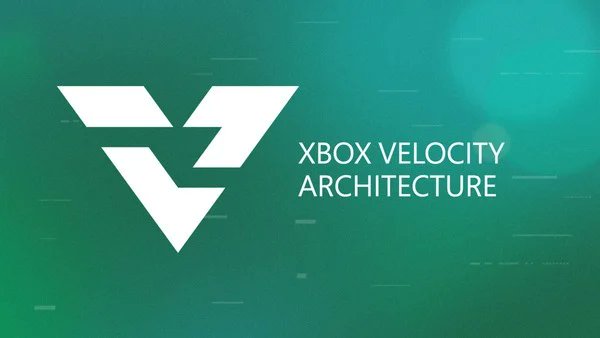
How are we all doing? I’ve decided to keep on with the tech posts but in a slightly different way. So, using updated and final info on what the new XSX and XSS are like, I wanted to talk about the big question right now: Is the Series S going to hold back next gen gaming? 1/41 
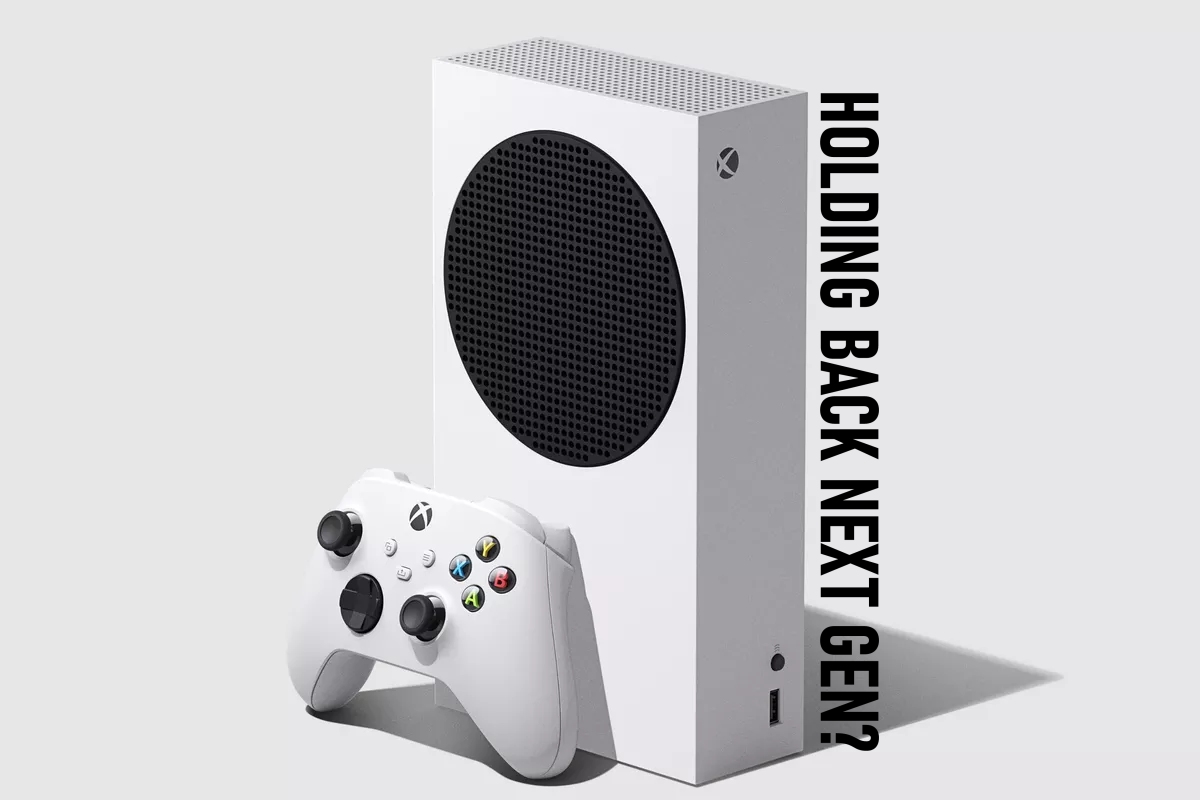
SPOILER: No. No it’s not, and anybody with even a little experience will tell you as such. I’ll go into more detail below as to why that is, but the most important aspect is that this is NOT a last gen console, I can’t stress that enough. 2/41
If we were comparing this to an xbox One S/xbox One X, there would be issues of course. While you CAN make a product work on both new and old generation systems, it would require a lot more work and also limits what you can do from a gameplay standpoint a bit more. 3/41
Let’s start at the beginning and show a brief updated look on the official specs of the system. Any previous comments I’ve made were based on rumour and leaks, so let’s focus on this as an update to all that if we could. This is the official spec of the XSX, versus the XSS: 4/41 
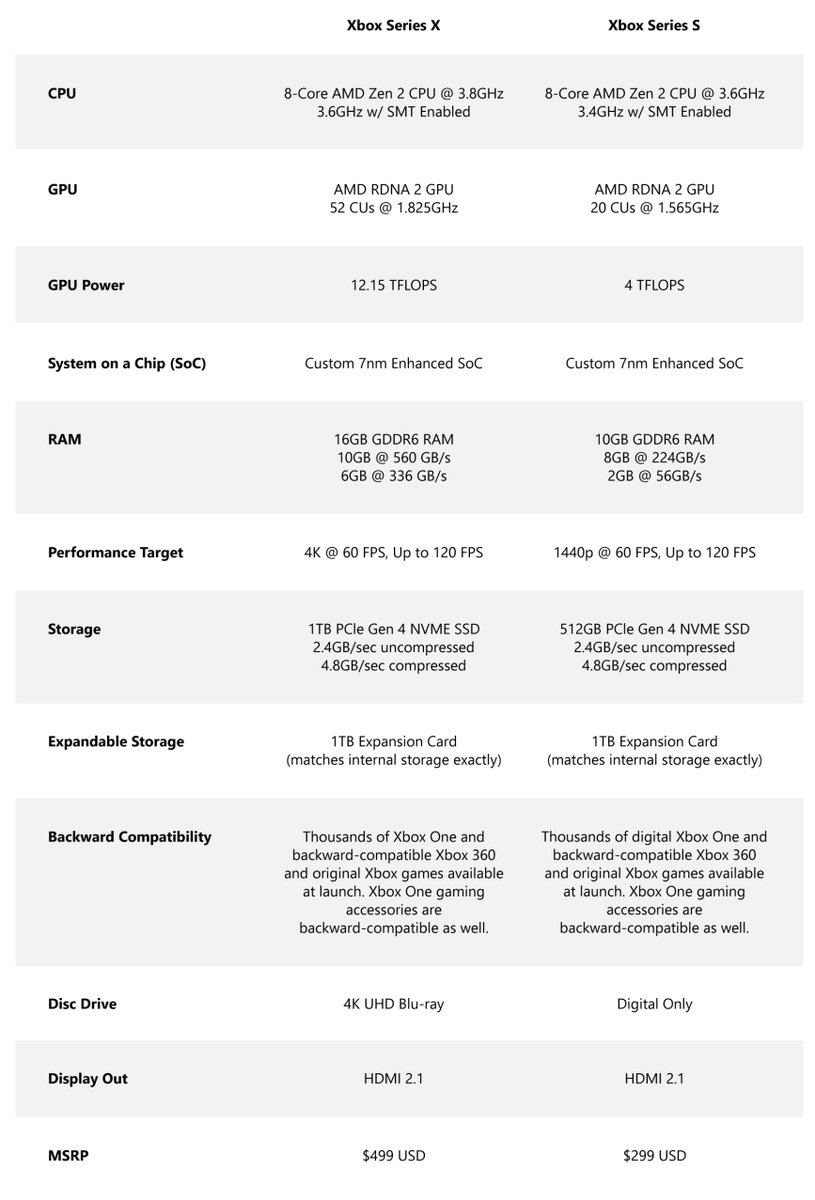
As you can see, there are some areas that stand out, namely the overall GPU power, memory amount/speed, and of course a hot topic right now, the CPU power. But let’s dive right in and take a gander. (I was going to save this for the weekend but let’s do it) 5/41
CPU: The CPU is listed as the same 8-core Zen 2 running at 3.6Ghz (3.4Ghz when you enable simultaneous multithreading). For comparison, the XSX is running at 3.8Ghz/3.6GhzSMT. In the scheme of things, a 0.2Ghz drop is hardly anything to worry about. 6/41 

The slight drop in perf could be made up in other ways. For example with a drop in res you also will likely drop your distance based LOD, and this can include reducing physics calculations for foliage or objects too. There are a fair few ways to make this drop redundant. 7/41
But in all honesty, CPU is usually second place to GPU in the power tug of war for any system. It’s likely that the system won’t even use most of its CPU power, as maxing out all 8 cores at full speed is a rarity. But, that’s a per-game basis. 8/41
Next up is GPU, and this is likely the real confusing part of the whole system for a lot of people. I keep reading “it’s slower than the One X”, and it drives me crazy, but it’s an understandable conclusion to make if you don’t understand the technology. 9/41 

First of all we need to talk about RDNA. RDNA is architecture that powers AMD gaming GPUs. RDNA 2 is a revision of that architecture, with lots of fancy new bells and whistles, which has up to 50% performance increase per watt when compared to RDNA1. 10/41
However, the previous X1X was GCN 4 (Polaris) architecture, not RDNA, and the power difference in performance is large. A 4tf GCN GPU would not perform anywhere close to a 4tf RDNA2 GPU. You can’t just throw the numbers together like that. 11/41
When you add in all the other areas of improvement that the XSX has, such as sampler feedback streaming, IO improvements, faster memory, ray tracing capability etc, the XSS eats the past gen X1X alive, and it really is no contest. 12/41
To go into the actual performance metric of GCN vs RDNA 2 is beyond what I want to talk about as I would need to explain RDNA1 first (which is already a step up). So forgive me but I’ll link to another article to explain: graphicscardhub.com/rdna-vs-navi-v… 13/41
The xbox RDNA2 feature set includes hardware support for ray tracing (DXR), mesh shading, variable rate shading etc. Some fancy stuff. However, the Series S GPU has the exact same feature set as the Series S. 14/41
Whatever the XSX can do, the XSS can do as well. But what about the speed? Well, the XSS is running with just 20CUs active, at a slower clock. Surely it can’t compete? Well, actually… Yes it can. The XSS is targeting a vastly smaller resolution for one, around 1080p/1440p. 15/41
One thing people never seem to understand is that the performance cost ALONE of drawing 4k is absolutely massive. For an example, the 6tf of GPU power in the original X1X was needed to essentially lift titles into 4k from around 1080p on the 1.2tf original X1S. 16/41 
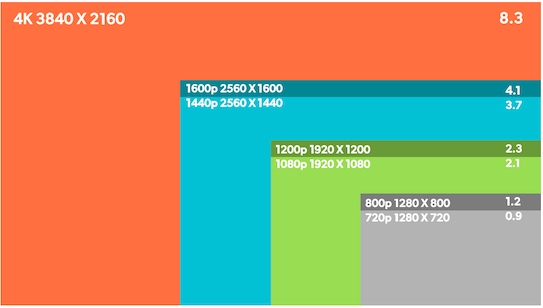
Yes 4k rendering is expensive. It comes with a lot of trade-offs for decent perf and rarely do we get games on the current generation that are 4k/60. It’s a mammoth task in terms of raw GPU power and the games that push this are usually graphically simple in rendering. 17/41
A game that targets 4k/30 however, means that twice the GPU power budget is now available to them to be allocated to whatever you need. This means keeping a high resolution, but also allowing twice as much detail to be present in the scene. A good trade-off for SOME games. 18/41
But a game that is targeting much lower resolution? Do the math. It requires MUCH less GPU power devoted to resolution alone. Of course rendering at a lower resolution will also mean other visual effects are cheaper to render, too. 19/41
So, can the XSS run 4k games? No. It’s not supposed to. Can your Switch? The system is designed as a 1440p max system. IMO, it likely won’t hit that native without a few concessions, such as maybe upscaling/checker boarding etc. I anticipate it hitting 1080p native mostly. 20/41
But what about ray tracing? Well, that’s a tricky one. It quite clearly can do ray tracing, and it quite clearly can do it well, from the Watch Dogs video we saw. However, that’s a last gen title. What about in the future? 21/41 
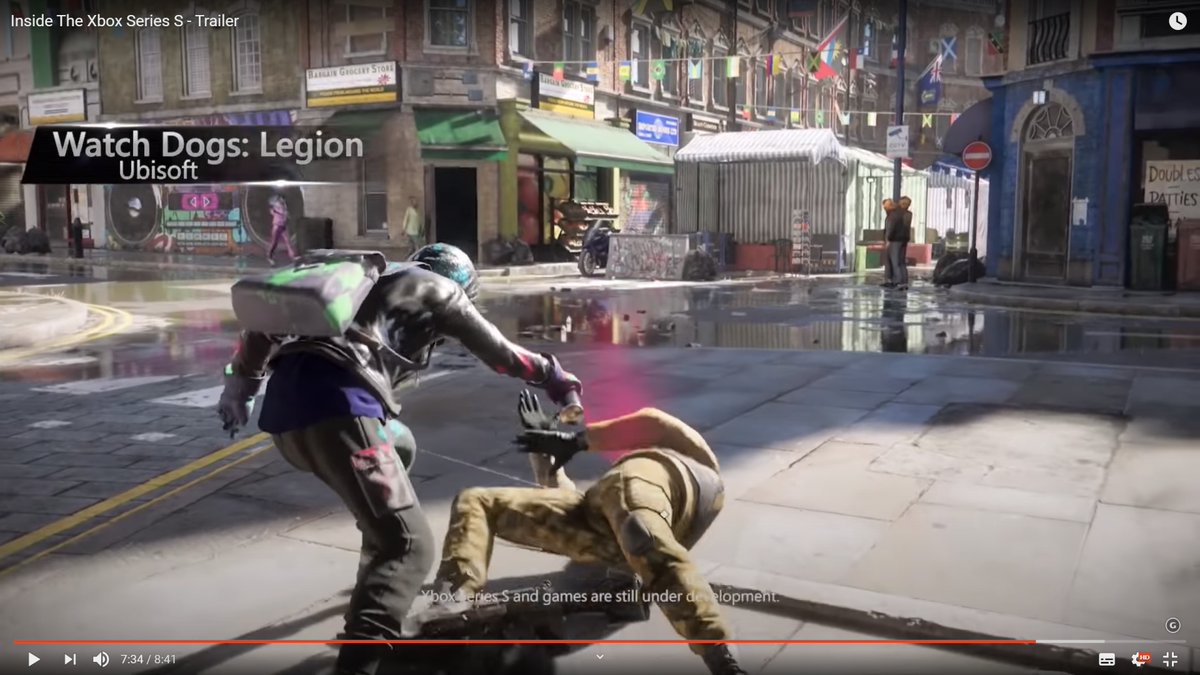
This is harder to say but yes it’s likely that in the future RT will be turned down in some games or even off. That’s a worthwhile sacrifice for such a cheap small unit. I don’t have a crystal ball, but I would say if you want full quality RT, pay a full quality price, no? 22/41
RAM: Well, this is another interesting area, as this isn’t what I was expecting. Truth be told, I was expecting it to be the same speed, just less. However, as you can see, RAM has not only dropped in size, but speed too. 23/41 

10GB 560GB/s versus 8GB 224GB/s for the fast and 6GB 336GB/s versus 2GB 52GB/s. That’s a rather large drop, no? In all honesty, if any concerns or issues pop up for developers, it will be because of this. But let’s look closer. 24/41
First of all, the obvious. A drop in resolution also means a massive drop in VRAM utilisation, and as such, you can strike off a shed load of that memory right away. In fact, 4k traditionally uses 8gb of VRAM, while 1080p just 2-6gb, and 1440p 4-8gb. 25/41
With such a large cost reduction it’s possible to hold more *other* data in memory, meaning that you already need less speed. However, let’s take this further. Smart delivery will be used for delivering ONLY the assets you need. 26/41
What does this mean exactly? Well, on a XSS you could have lower resolution textures or lower polygon models, as a possibility. I don’t see this becoming a norm, but it IS possible, so I need to mention it. Hence they would require substantially less memory. 27/41
Another amazing implementation is sampler feedback streaming, which will drastically reduce the cost of onscreen assets in memory by only drawing parts of the mip that are visible. A lower resolution means lower mip required, hence more memory gain. 28/41 
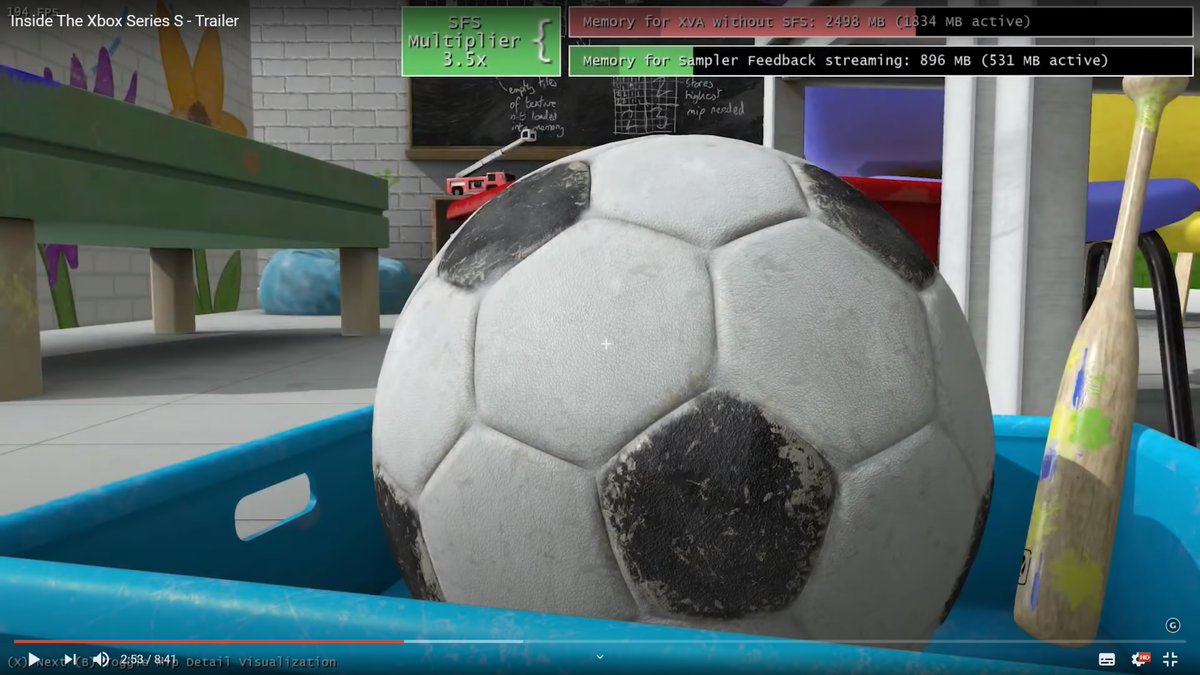
SSD: The SSD is the same spec between both machines, and as such all IO interactions will be exactly the same. The only difference here, is the size. 512GB is a small drive for a digital only device, no? However, that may not be as big an issue as you think. 29/41 

First of all, yes, you can buy expandable memory. Though the leaked price of this is anything but attractive to me. However more importantly, this is an SSD and not a HDD. See, on a traditional HDD, we have to do a very rubbish trick for better performance/loading. 30/41
A HDD is basically a spinning disk. To get your data the disk has to spin and it has to find this data. So a trick used or years now is that you duplicate the data on the disk so that it’s closer together to each other (faster). Of course this also means… Massive installs. 31/41
But an SSD is not like a HDD. You don’t need to spin, you don’t need to work the same. So data is only needed once. This will vastly reduce the size of game installs. Of course, COD will still likely be 300gb, but hey, that’s life! 32/41
Everything else: Well, it’s all pretty standard here. All accessories are supported on both, BC is on both, both are HDMI 2.1 which means 120fps gaming on some titles with VFR. Of course only the XSX has a disk drive, which will be a big factor for some. 33/41
So will the Series S hold back next gen gaming? No, of course not. “But it seems a lot of work for developers!” Actually… It’s really not. Usually, it’s quite simple to build your assets for a set specification in fact. 34/41
For my experience in the past/currently this all factors into your development pipeline. You make for your base system (let’s say the XSX) then scale to whatever is required. As the systems are so similar it’s as easy as dropping the res and a few quality settings. 35/41
If you were making a XSX game and then porting to the X1X, that would be different. With vastly different CPU power and a much slower overall system, huge changes and concessions would need to be made, and game design would be different from the off. 36/41
The reason for this is that some things are easily scalable. You can easily reduce polycount, or resolution. But what about AI? What about physics? What about open spaces in levels? Some things are much harder to just “lower” in quality. 37/41 
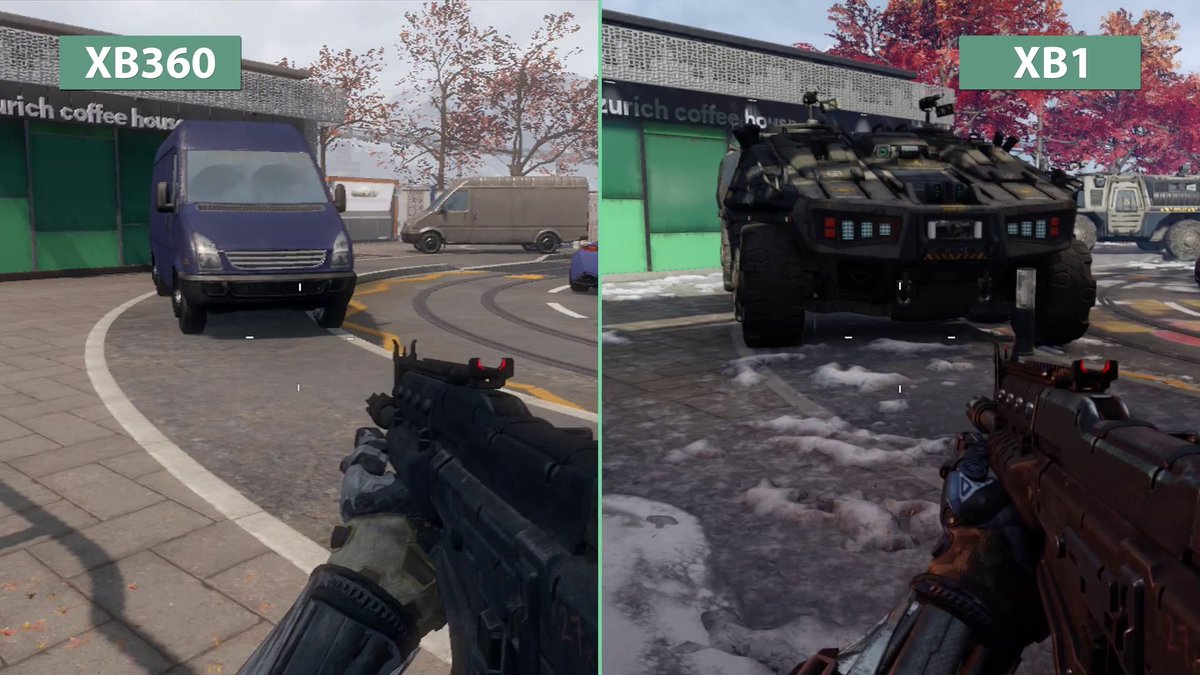
But if you are designing a game on the SAME architecture with the SAME feature set? It’s essentially the exact same principle of running a game on a GTX 2080ti versus a 2070, and isn’t complicated in the slightest. 38/41
There are of course, some developers who talk about not liking the process of having to cater to the XSS. Of course. This is like asking developers to make a third SKU in a way. While they share assets, it’s still time, still a LOT of QA, and this is all $$$ on a budget. 39/41
So as a final answer to the question, is the Series S going to hold back game design or graphics for ANY next gen system? No, not in the slightest. @jronald from xbox already said it best: “games are made for XSX, then scaled down resolution to XSS”. 40/41
Thanks guys, and as always, any questions let me know. The future is looking very bright for xbox, plus with the inclusion of EA play into Gamepass and more big things to come, it’s exciting times. 41/41
Additional: As always I’m going to point out that all this is my own personal thinking. I have NO access to dev kits for either system. This is based purely on experience and logic, and is a simple breakdown.
Already had some fanboy BS/insults so let’s not go that way please.
Already had some fanboy BS/insults so let’s not go that way please.
• • •
Missing some Tweet in this thread? You can try to
force a refresh



